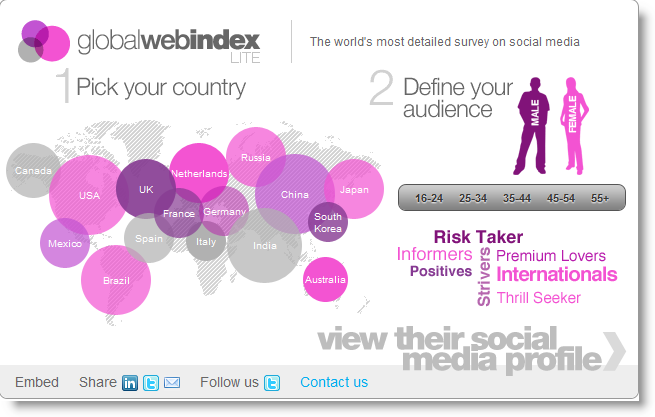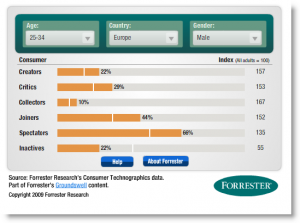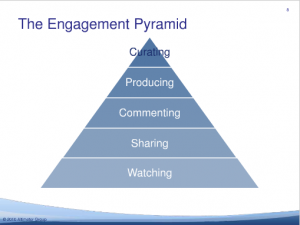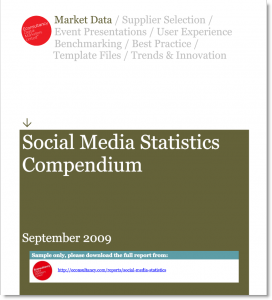By , Director of Digital Marketing at Torchbox
Facebook Places has launched in the UK this morning following its US launch last month and I believe its launch will see location-based services go mainstream in a way that the likes of Foursquare haven’t just yet.
If I was to ask you who the Mayor of your town or city is, would you answer with a resounding Churchill like ‘oh yes’ or a game show inspired ‘I’m sorry, I haven’t a clue’? For me it would be the latter. I know the mayor has a big black car and fancy robes. But I have no idea who he or she is.
And that lack of awareness is how I have felt as a mayor or former mayor of various places on Foursquare – the location-based social networking site that allows users to earn points and badges for checking in at venues. If you check in more times over a 60-day period than anyone else, you become the mayor of the venue.
At one point, I was mayor of my local pub, park, church and hospital. I’ve got 32 friends on Foursquare from work and far flung places who may have been aware of this, but none of the friends who I see regularly had any idea about my mayoral prowess because they weren’t using Foursquare.
They do however all use Facebook. And the majority still use it regularly.
That is why I find Facebook’s launch of Facebook Places so exciting. It is quickly going to bring location-based services to a mass market. A load of my Facebook friends have already used it this morning no doubt many more will as the day progresses.
Playing around with your mobile and updating people on Facebook when you’re out and about is a natural part of going out and I believe people will take the little bit of extra trouble to check in on Facebook Places and say where they are, who they’re with and what they’re doing. And you certainly won’t miss the Places icon on the Facebook iPhone app as it is right in the middle of the navigation screen. Facebook are giving it centre stage.
As you’d expect, some people have raised privacy concerns, but I don’t think this will stop it becoming huge quickly.
In terms of Foursquare, it remains to be seen what effect Facebook Places will have. The day after places was launched in the US, Fourquare claimed to have had it’s busiest sign-up day ever and it has announced it has now reached 3 million users. This number is bound to be dwarfed by Facebook before long as its 500+ million users start to use Places. Foursquare does, however, currently have things Places does not – the game play, the badges, the ability to become mayor and perhaps this is what they really need to focus on becoming famous for in a mainstream way.
Brands in the UK have used Foursquare as a way of driving PR stories and to show they are forward-thinking organisations. Early adoption has certainly driven headlines for the likes of Domino’s Pizza. I would be interested to know if it has driven business – there is currently no mayor at my local outlet despite the fact that a free pizza is up for grabs every Wednesday to the mayor.
However, if I worked for a brand, organisation or charity that had venues or shops, I would definitely look into Facebook Places, how it works and what opportunities there are (one downside seems to be you can’t add multiple locations and have to authenticate each individual venue – I feel sure this will be addressed sooner or later).
Early adopters will be able to drive PR headlines but it also has the potential to drive interactions with and insight from the people who visit your destinations.
Facebook Places is definitely going places and you may as well take a look to see if it is worth jumping onboard to help you reach your objectives.
For a guide to Facebook Places for Businesses and Advertisers, click here.
To get started on Facebook Pages, you’ll need the most recent version of the Facebook iPhone app or if you have a mobile browser that support HTML5 and geolocation you can access .

Photo via audreyjm529 on Flickr
by , Tamar
The online community has been buzzing for the past 24 hours, first in anticipation-of and now digesting the ramifications-of the ‘‘. Announced just after midnight on Tuesday (UK time), Twitter have completely revamped their website to give more space to a number of new features.
If you want the headline view, I wrote a blog early this morning on the subject – but I wanted to head over here to the IAB social blog to speculate over how these changes might affect advertisers…
The main areas of change that will probably affect brands are:
The new, all-inclusive, super-sticky site will undoubtedly encourage a lot of tweeters who previously used the service through third-party apps and sites to come back to Twitter.com – which in turn will obviously increase the exposure that existing advertisers receive. Recent developments like Sponsored tweets, promoted trends and the like are already making waves, but are only visible to people visiting Twitter.com. This massive increase in page-views will surely make advertising directly with Twitter a much more attractive proposition.
The new layout also gives much greater opportunity for tweeters (and brands) to give exposure to great media content, without ever leaving the site. Partnerships with services like YouTube, Flickr and Vimeo will mean that video and image content (amongst others) will be viewable directly in your Twitter stream – as my boss and Tamar’s CEO commented this morning, with ‘New Twitter’ it’s quite likely that the Old Spice ‘guy’ would have become a sensation on Twitter, as opposed to mainly on YouTube…
Finally, the third consideration for brands and advertisers will be how this affects third-party sites that they might currently be advertising on. As this post by Mashable points out, the New Twitter is essentially a desktop app, on the web. Services like TweetDeck, Hootsuite and the like will undoubtedly feel the pinch after New Twitter rolls out, so if you advertise with them you might be in for a drop in views. Just speculation of course, but I can’t see how this WON’T affect those apps…
With the roll-out set to continue over the next couple of weeks, many of the ramifications will only start to be felt in the next month or so, but even at this early stage it’s clear to see the ‘New Twitter’ will be a much more welcome place to advertisers, brands and users alike…
by , Torchbox
New services, new sites, new social channels, new this, that and the other. A typical day in the digital world. Once in a while though you hear about something new that you think might be a game changer. I think ‘Live On YouTube’ fits that bill…
But if you want to see what I’m talking about you better be quick for ‘Live On YouTube’ is a two day trial and that trial finishes today (the 14th September). To see what programs are on and read more about YouTube’s intentions, just visit this YouTube blog post. If you’re reading this blog after 14th September, I’m sorry…
So why do I think this move from YouTube is a potential game changer?
Services like uStream and Justin.tv have shown that the power to broadcast live now lies in the hands of anyone who has a laptop, video camera and internet connection.
This was neatly summed up in March 2010 when writing about the US Embassy’s decision to broadcast a press conference live on Justin.tv, the site’s blogger said: ‘We’re excited to have the Vice President on Justin.tv. And we’re even more excited that this isn’t a big, elaborate production that most users would have no chance of replicating. The folks running the broadcast are plugging a camera into a laptop and going. That’s the way we think live video can be really powerful for everyone to use, and that includes the Vice President.’??And the US Embassy is not alone.
More and more organisations – from Glastonbury’s Emerging Talents Competition to Greenpeace’s demonstrations – are now taking advantage of the ability to broadcast live – and then using the footage as video content that can be fed into an archive.
However, whilst uStream and Justin.tv are hugely popular sites that are well worth checking out, they are nowhere near as big as YouTube. If YouTube puts live broadcasting into the hands of their partners (note: YouTube are saying ‘partners’ in their material and not everyone – see ), it has the potential for live broadcasting to go mainstream in the same way that Facebook Places may take location services pioneered by the likes of Foursquare into the mainstream.
The most exciting thing about this for me will be when more and more have online TV. If I work for a brand, charity, band, sports team etc etc, and they are a YouTube partner, they will have the potential to broadcast live onto someone’s TV (or laptop, mobile, iPad etc) and drive a social stream alongside it. If you can let your audience know about it through email, social media channels etc, you could be competing with the mainstream broadcasters at a fraction of the cost.
I’ve thought for a while that live broadcasting is one to watch and one to trial. This conviction is certainly strengthened by YouTube’s decision to run the test. I hope you read this story whilst you still had a chance to see it live…
, Group Planning Director at TMW
Before a brand commits to any social media campaign, activity or platform it’s clearly essential to understand how their target audience behaves in these environments. For example, which environments does your target audience frequent? How active are they in this space? Are they the types of people who proactively share and contribute to the conversation or do they prefer to observe by the sidelines? Are they likely to invest time and energy in UGC or would such an invitation fall on deaf ears? What are the motivations and key drivers that lie behind their social media behaviour?
Unless one can answer these types of questions, there’s a fair chance your social media efforts could all be in vein. The good news, however, is that there are a number of sources, tools and frameworks available which can help us build a fairly informed picture of our target audience’s social media profile. And the best bit, most of them are completely free! Outlined below are the ones I’m most familiar with or have found to be most useful over the years. I’ve also restricted the list to those tools which can be applied across European markets and not just the US.
1. The Global Web Index

The Global Web Index (Lite) is a nifty little free tool recently published by Trendstream to help you view the social media profiles of different online audiences across Europe. It’s based on a quantitatitive survey and manages to overlay social media behaviour and motivations by country, age and attitudinal profiles. The full version will have a lot more meat on the bones but for a quick snapshot this Lite version can be quite an insightful tool, particularly when comparing against different markets.
2. Universal McCanns Social Media Tracker

This in my view is the holy grail when it comes to tracking trends in social media from a global perspective. It’s been going a few years now and is an essential point of reference for anyone trying to identify behavioural trends in social media. There’s a free Silverlight-based tool here which is quite fancy but for usable insights and stats you really need to read the Wave 4 report . Pure gold dust!
3. Forresters Social Technographics Tool

Forrester’s social technographics tool has been around for a while but is still a great way to map your target audience’s propensity to participate in social media. With this tool you can get a decent idea whether your audience over indexes for certain types of behaviour. So for example, if they over index as ‘creators’ there’s a fair chance they’d be receptive to getting involved in a crowdsourcing or UGC project. Conversely, if they’re predominently spectators and inactives, don’t even go there!
Unfortunately some European markets are not covered for some age profiles which I assume is because they don’t hold enough survey data but for broad, topline assessment of socialgraphics it’s a great place to start.
4. Altimeter’s Engagement Pyramid

This isn’t a data analytical tool as far as I believe but rather a strategic framework to help map the different ways in which consumers engage in social media. Even though there’s no data to substantiate this, it’s good common sense and highlights the importance of socialgraphics to help inform social media strategies rather than simply relying on traditional demographic and psychographic profiles. If you want to know more about this interesting approach I’ve reviewed it more fully on my blog.
5. TMW’s Motivational Drivers to Social Media Participation
Understanding ‘how’ your target audience participates in social media is key but only one piece of the jigsaw. It’s also important to ask yourself ‘why’. At TMW, we conducted some research in conjunction with research agency ICM to help identify the motivations behind social media participation. We concluded there are 6 key motivational drivers for participating in this space.
* Discovery: for self-development or to learn from others
* Altruism: to help others make the right decision or become involved in the brand’s product decision
* Social: to connect to the like minded, reinforce tribal identity or gain a sense of belonging
* Fame: for personal notoriety or to challenge their ability against others
* Escapism: for entertainment and an escape from the daily routine
* Expression: as an outlet for their imagination or expression of personal identity
The interesting thing is that these motivations change according to different demographics. You can read some of the insightful results from this study on my blog here where we explore the differences in motivations between gender and age.
6. TGI Net Europa
Launched in September 2008, with new data released twice a year, TGI Net Europa combines the full TGI Europa database with extensive detailed information on internet behaviour and attitudes. To be fair it’s probably more useful to draw broader conclusions on internet behaviour for a given target audience than building robust socialgraphic data. It’s not a free tool either so if you want access this type of data you may have to ask your media agency nicely!
7. Social Media Statistics Compendium by econsultancy
 The Social Media Statistics Compendium is one of the reports bundled with the eConsulancy’s Internet Statistics Compendium. It costs £250 on its own but is jam packed with useful stats on social media from a variety of third party sources.
The Social Media Statistics Compendium is one of the reports bundled with the eConsulancy’s Internet Statistics Compendium. It costs £250 on its own but is jam packed with useful stats on social media from a variety of third party sources.
8. CheckFacebook.com

If you want to understand the profile of Facebook users within your country and compare this to your target audience profile, it’s worth visiting . It’s free too.
9. Nielson’s Global Faces & Networked Places Report – March 2009
Nielson’s Global Faces and Network Places report looks at the social media market as a whole but does have a useful section on how the audience is changing and starting to mature.
10 IAB Online Audience Research
Last but not least, there are a number of helpful online research papers available to IAB members including some for specific audiences such as women, Mums and luxury consumers)
Summary
So there you have it – a mix of tools and approaches to help you build up a social media profile of your target audience. It’s not an exhaustive list by any stretch of the imagination so if you know any more I may have missed feel free to add them below.
By , Director of Regulatory Affairs, IAB
Earlier this week the Advertising Standards Authority (ASA) announced its intention to extend its self-regulatory digital media remit from 1 March 2011. This will cover business’ own marketing communications on their own websites as well as in other non paid-for space under an advertiser’s control, such as social networking sites. All paid-for digital advertising, such as PPC search, display and (commercial) classified, is already covered by robust rules to protect consumers and promote trust within the sector.
What does this mean?

It means that the self-regulatory system for UK advertising is keeping pace with evolving digital marketing. The IAB has published a set of FAQs which provide further details on the extended remit. So what is really changing? The extended rules will toughen up on those that use these platforms to market age-restricted products, such as alcohol, as well as apply the existing food marketing rules. These are ‘thorny’ issues and so we should welcome this. The politicians certainly will. Chris Reed from PR and social media agency Brew Digital summed it all up very nicely: he concludes that “for most of us working in this space it should mean no change whatsoever.” He’s right. These new rules should not replace true self-regulation. Businesses should treat all marketing communications / ‘conversations’ with consumers as within remit to uphold the integrity of digital marketing. Read more…
For the last twenty-four months, or so, storytelling has become more important to Account Planners and Brand Strategists alike. Stories are memorable; stories get shared; stories deliver meaning and answer the innate why and how questions: How did you come to be? Why are you talking to me? Why should I buy your product?
Our analysis team has been working to understand product anecdotes for some of our clients recently. This has involved reading some of the everyday product stories that are embedded within social media.
Their findings have been fascinating and they have stimulated conversations that question the direction of the brand, its segmentation preferences and marketing activities. The key takeaway for us: Before you start to tell your story, read the stories that have already been written about your brand and understand their contexts and implications.
Understanding what’s already out there will better place us, brand people, to define our own stories, make them culturally relevant and ensure they effectively answer the aforementioned, innate questions.
Dhiren Shingdia – Market Sentinel





 The
The 



